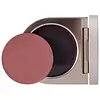Rose Inc Cream Blush Refillable Cheek & Lip Color Versus Lawless Pinch My Cheeks Soft-Blur Cream Blush
What's inside
What's inside
 Key Ingredients
Key Ingredients

 Benefits
Benefits

 Concerns
Concerns

 Ingredients Side-by-side
Ingredients Side-by-side

Ricinus Communis Seed Oil
MaskingPentaerythrityl Tetraisostearate
EmollientCaprylic/Capric Triglyceride
MaskingCopernicia Cerifera Wax
Oryza Sativa Bran Wax
Skin ConditioningHydrogenated Vegetable Oil
EmollientSynthetic Fluorphlogopite
Silica
AbrasiveIsononyl Isononanoate
EmollientLauroyl Lysine
Skin ConditioningEuphorbia Cerifera Wax
Squalane
EmollientSodium Hyaluronate
HumectantCeramide Ng
Skin ConditioningRosmarinus Officinalis Leaf Extract
AntimicrobialHelianthus Annuus Seed Oil
EmollientTocopherol
AntioxidantCaprylyl Glycol
EmollientHydrogenated Castor Oil
EmollientSorbitan Tristearate
Emulsifying1,2-Hexanediol
Skin ConditioningTropolone
Skin ConditioningAluminum Hydroxide
EmollientTin Oxide
AbrasiveMica
Cosmetic ColorantCI 77891
Cosmetic ColorantIron Oxides
CI 15850
Cosmetic ColorantCI 45410
Cosmetic ColorantRicinus Communis Seed Oil, Pentaerythrityl Tetraisostearate, Caprylic/Capric Triglyceride, Copernicia Cerifera Wax, Oryza Sativa Bran Wax, Hydrogenated Vegetable Oil, Synthetic Fluorphlogopite, Silica, Isononyl Isononanoate, Lauroyl Lysine, Euphorbia Cerifera Wax, Squalane, Sodium Hyaluronate, Ceramide Ng, Rosmarinus Officinalis Leaf Extract, Helianthus Annuus Seed Oil, Tocopherol, Caprylyl Glycol, Hydrogenated Castor Oil, Sorbitan Tristearate, 1,2-Hexanediol, Tropolone, Aluminum Hydroxide, Tin Oxide, Mica, CI 77891, Iron Oxides, CI 15850, CI 45410
Dimethicone
EmollientIsononyl Isononanoate
EmollientCetearyl Isononanoate
EmollientMica
Cosmetic ColorantTrimethylsiloxyphenyl Dimethicone
Polyethylene
AbrasiveDicalcium Phosphate
AbrasiveLauryl Dimethicone
Skin ConditioningNylon-12
Silica
AbrasivePolymethyl Methacrylate
Dimethicone/Divinyldimethicone/Silsesquioxane Crosspolymer
HumectantPentaerythrityl Tetra-Di-T-Butyl Hydroxyhydrocinnamate
AntioxidantCaprylic/Capric Triglyceride
MaskingCamellia Sinensis Leaf Extract
AntimicrobialCI 77891
Cosmetic ColorantCI 45410
Cosmetic ColorantCI 73360
Cosmetic ColorantDimethicone, Isononyl Isononanoate, Cetearyl Isononanoate, Mica, Trimethylsiloxyphenyl Dimethicone, Polyethylene, Dicalcium Phosphate, Lauryl Dimethicone, Nylon-12, Silica, Polymethyl Methacrylate, Dimethicone/Divinyldimethicone/Silsesquioxane Crosspolymer, Pentaerythrityl Tetra-Di-T-Butyl Hydroxyhydrocinnamate, Caprylic/Capric Triglyceride, Camellia Sinensis Leaf Extract, CI 77891, CI 45410, CI 73360
 Reviews
Reviews

Ingredients Explained
These ingredients are found in both products.
Ingredients higher up in an ingredient list are typically present in a larger amount.
This ingredient is an emollient, solvent, and texture enhancer. It is considered a skin-softener by helping the skin prevent moisture loss.
It helps thicken a product's formula and makes it easier to spread by dissolving clumping compounds.
Caprylic Triglyceride is made by combining glycerin with coconut oil, forming a clear liquid.
While there is an assumption Caprylic Triglyceride can clog pores due to it being derived from coconut oil, there is no research supporting this.
Learn more about Caprylic/Capric TriglycerideCI 45410 is a synthetic red-pigment and dye.
It often goes by both Red 28 or Red 27; manufacturers label both ingredients as CI 45410.
This dye is commonly found in makeup because it imparts a vivid color. Some types of this dye change color based on pH level and interaction with moisture:
Your skin has a natural pH of around 4.5 - 5.5.
According to the FDA, CI 45410 is not permitted for use in eye products.
Red 27 is a flourescein dye and commonly used as a fluorescent tracer in medicine.
Learn more about CI 45410Ci 77891 is a white pigment from Titanium dioxide. It is naturally found in minerals such as rutile and ilmenite.
It's main function is to add a white color to cosmetics. It can also be mixed with other colors to create different shades.
Ci 77891 is commonly found in sunscreens due to its ability to block UV rays.
Learn more about CI 77891Isononyl Isononanoate is a synthetic skin-conditioner and texture enhancer. It is created from nonanoic acid, a fatty acid found in cocoa and lavender oil.
As an emollient, Isononyl Isononanoate helps keep your skin soft and smooth. This is because emollients create a barrier on the skin to trap moisture in.
Isononyl Isononanoate helps give products a velvet feel and improves spreadability.
Learn more about Isononyl IsononanoateMica is a naturally occurring mineral used to add shimmer and color in cosmetics. It can also help improve the texture of a product or give it an opaque, white/silver color.
Serecite is the name for very fine but ragged grains of mica.
This ingredient is often coated with metal oxides like titanium dioxide. Trace amounts of heavy metals may be found in mica, but these metals are not harmful in our personal products.
Mica has been used since prehistoric times throughout the world. Ancient Egyptian, Indian, Greek, Roman, Aztec, and Chinese civilizations have used mica.
Learn more about MicaSilica, also known as silicon dioxide, is a naturally occurring mineral. It is used as a fine, spherical, and porous powder in cosmetics.
Though it has exfoliant properties, the function of silica varies depending on the product.
The unique structure of silica enhances the spreadability and adds smoothness, making it a great texture enhancer.
It is also used as an active carrier, emulsifier, and mattifier due to its ability to absorb excess oil.
In some products, tiny microneedles called spicules are made from silica or hydrolyzed sponge. When you rub them in, they lightly polish away dead skin layers and enhance the penetration of active ingredients.
Learn more about Silica